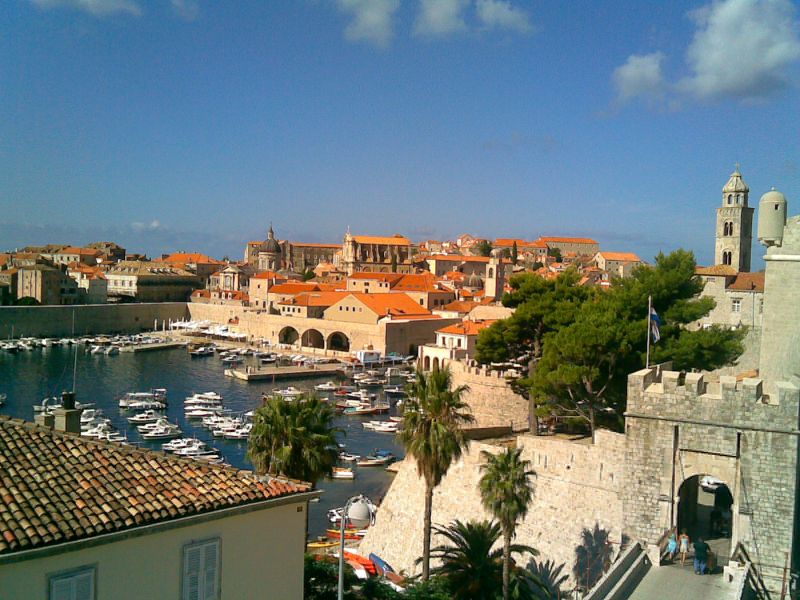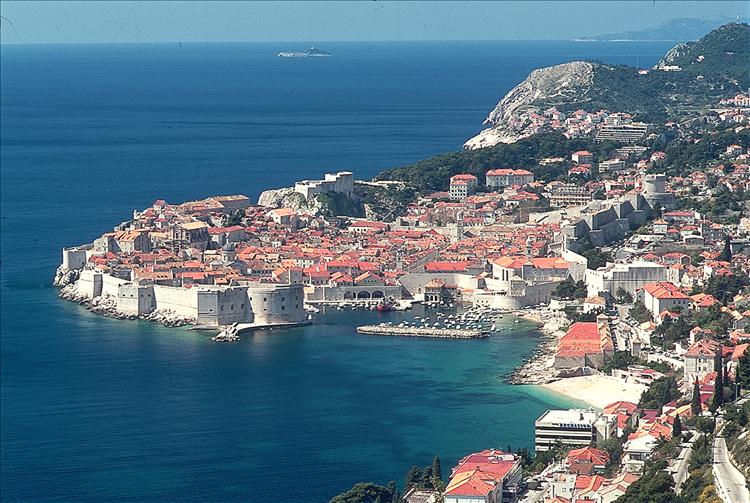Dalmatia, positioned at the terminal end of the Isthmus of Dubrovnik. It is one of the most prominent tourist destinations on the Adriatic, a seaport and the center of Dubrovnik-Neretva county. Its population was 43,770 in 2001,[1] down from 49,728 in 1991.[2] In 1979, the city of Dubrovnik joined the UNESCO list of World Heritage Sites.
The prosperity of the city of Dubrovnik has always been based on maritime trade. In the Middle Ages, as the Republic of Ragusa, also known as the fifth Maritime Republic (together with Amalfi, Pisa, Genoa and Venice), it became the only eastern Adriatic city-state to rival Venice. Supported by its wealth and skilled diplomacy, the city achieved a remarkable level of development, particularly during the 15th and 16th centuries. Although demilitarised in the 1970s with the intent of forever protecting it from war devastation, in 1991, after the breakup of Yugoslavia, it was besieged by Serb-Montenegrin forces for 7 months and heavily damaged by shelling.
A feature of Dubrovnik is its walls that run 2 km around the city. The walls run from four to six metres thick on the landward side but are much thinner on the seaward side. The system of turrets and towers were intended to protect the vulnerable city
The climate along the Dubrovnik Region is a typical Mediterranean one, with mild, rainy winters and hot and dry summers. However, it is perhaps distinct from other Mediterranean climates because of the unusual winds and frequency of thunderstorms. The Bura wind blows uncomfortably cold gusts down the Adriatic coast between October and April, and thundery conditions are common all the year round, even in summer, when they interrupt the warm, sunny days. The air temperatures can slightly vary, depending on the area or region. Typically, in July and August daytime maximum temperatures reach 29 °C, and at night drop to around 21 °C. More comfortable, perhaps, is the climate in Spring and Autumn when maximum temperatures are typically between 20 °C and 28 °C.










